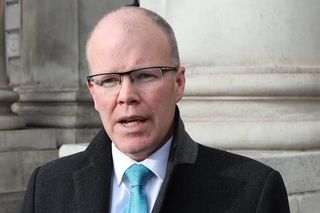Islam to become Ireland's second religion by 2043
There are several large Islamic centres around Ireland, including this one in Clonskeagh, Dublin
ISLAM will become Ireland’s second religion within the next 30 years because of dramatic population growth and immigration.
The revelation came as construction work is expected to begin next year on Ireland’s largest mosque.
The Clongriffin centre, on Dublin’s northside, will be the largest Islamic religious complex in the State and will also boast a major cultural centre.
An Bord Pleanala earlier this year granted planning permission for the three-storey complex, which is earmarked for a six-acre site owned by developer Gerry Gannon.
Costing more than €40m, the mosque complex will be able to cater for more than 3,000 people and will feature two minarets, a prayer hall, a cultural centre, offices, bookshop, a library, a mortuary, a creche, a 600-seat events centre, school, a state-of-the-art fitness centre, and apartment blocks.
The entire complex will be 5,573sqm in size and will be able to cater for 600 worshippers for Friday prayers.
Population statistics compiled by the Central Statistics Office confirmed that Islam is now Ireland’s fastest-growing religion and, at its current rate of expansion, it is set to become the second religion in the State after Catholicism by 2043.
In 1991, Islam accounted for just 0.1pc of the Irish population. That soared to 1.1pc – a 10-fold increase – by 2011, when a total of 49,204 Muslims were resident in Ireland.
Census
While there are indications the growth rate has slowed to 70pc between 2002 and 2006, a strong birth rate and immigration are expected to result in
Ireland’s Muslim population exceeding 100,000 by 2020.
However, figures are not available for the population breakdown between the Shi’ite and Sunni branches of Islam.
The latest Census figures also revealed that 84pc of the Irish population describe themselves as Catholic, down from 91.6pc in the 1991 census.
The second fastest growing religion in Ireland is Orthodox Christianity, where numbers have doubled in the space of five years, rising to 45,223 in 2011. This is almost entirely down to immigration from
the former Soviet bloc states where Orthodox Christianity is dominant.
The Protestant religions accounted for some 5pc of the population, dramatically down on figures from 1900-1920. But the good news for the Church of Ireland is that its overall population in the Republic is increasing by its greatest rate for almost a century with 129,039 Church of Ireland members in April 2011, an increase of 6.4pc in just five years.
The number of Irish people with no religion, atheists and agnostics, increased by 400pc in Ireland between 1991 and 2011 to a total of 277,237. This group included 14,769 primary school-aged children and 14,478 of secondary school age. There were 4,690 children aged under one year who had no religion.
Join the Irish Independent WhatsApp channel
Stay up to date with all the latest news













